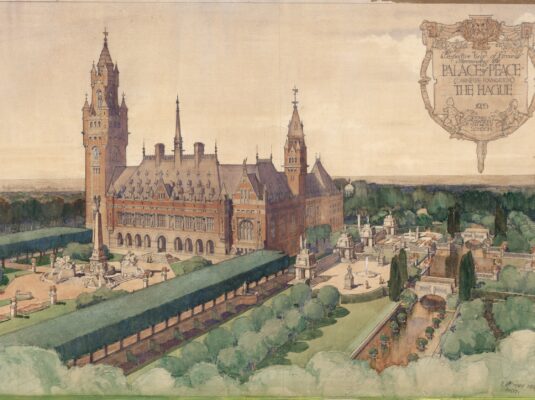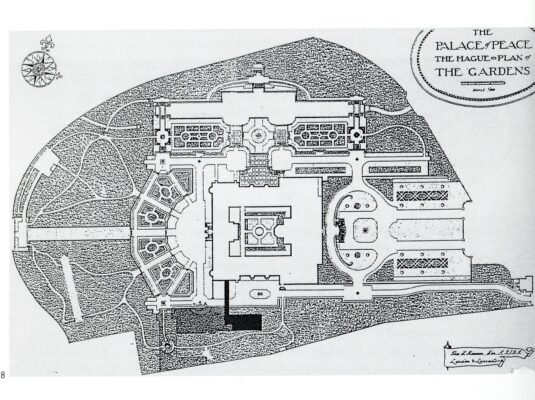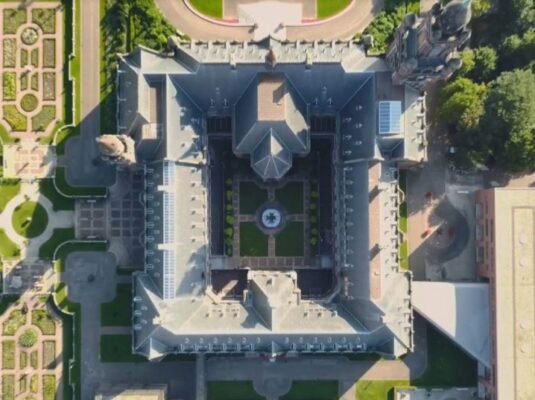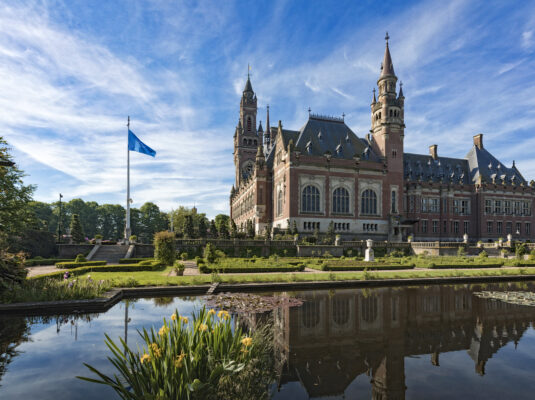Andrew Carnegie wished that the Peace Palace would stand detached from its surrounding environment and be enclosed by a garden. His wish played a part in the decision to build the Peace Palace on parts of the old Zorgvliet park, away from the city center. A competition was also held for the design of the garden and it was won by the British garden architect Thomas Mawson, who was famous for his designs in which garden and building form a unity. For the Peace Palace he also chose to create a gradual transition between garden and palace, with spacious terraces inviting people to admire the gardens. These terraces were laid out in brick, the same material that was used for the palace itself.
Mawson expressed the peace ideal in his choice of botanical elements: sharp thorns were avoided, and only trees and shrubs with small leaves were selected, in order to allow much light into the garden. For the big pond, a natural water course from the dunes was adapted. Water, just like peace, is one of the first conditions of life. The roses in the abundant rosarium symbolize love. Because the ancient trees of Zorgvliet shield the garden from the busy city, it is an oasis of peace and quiet.
In an interview with ‘Bij ons in de Residentie’ Dolf van Eendenburg, the garden coordinator of the Peace Palace, tells his fascinating story. Read the interview here and find out what it is like to live and garden at the Peace Palace.
BinnensteBuiten KRO-NCRV item about the garden of the Peace Palace (in Dutch).



